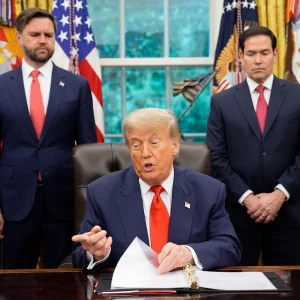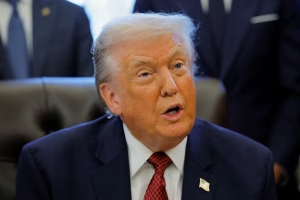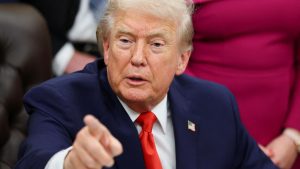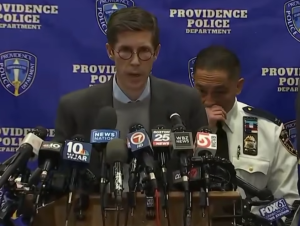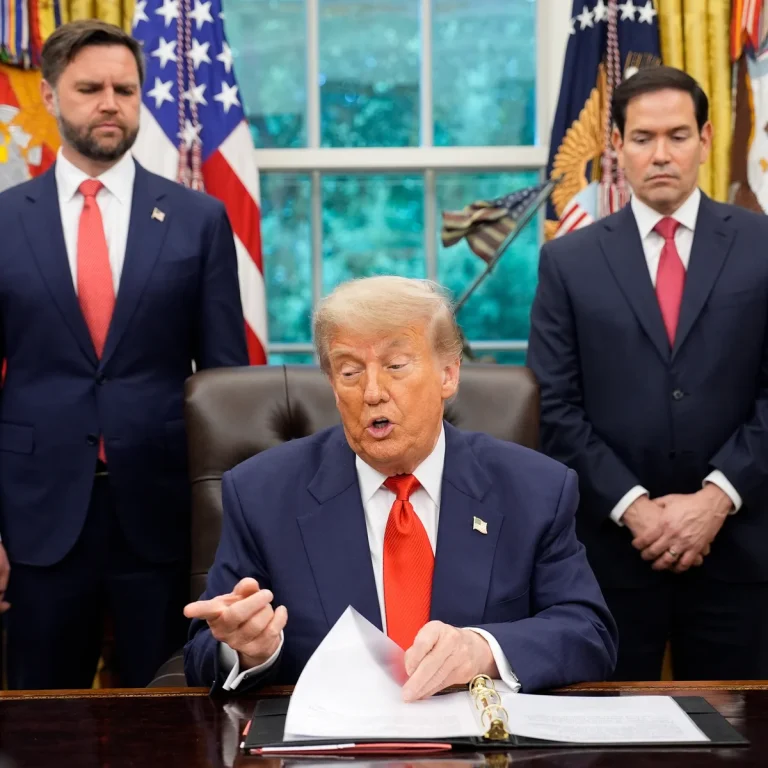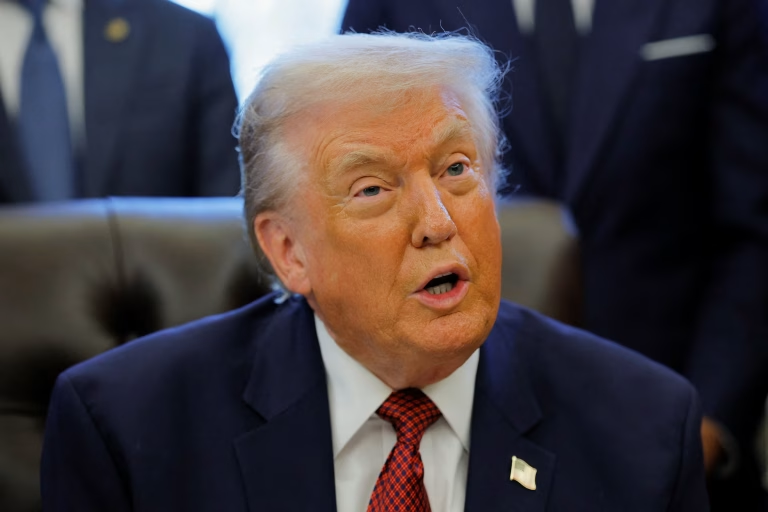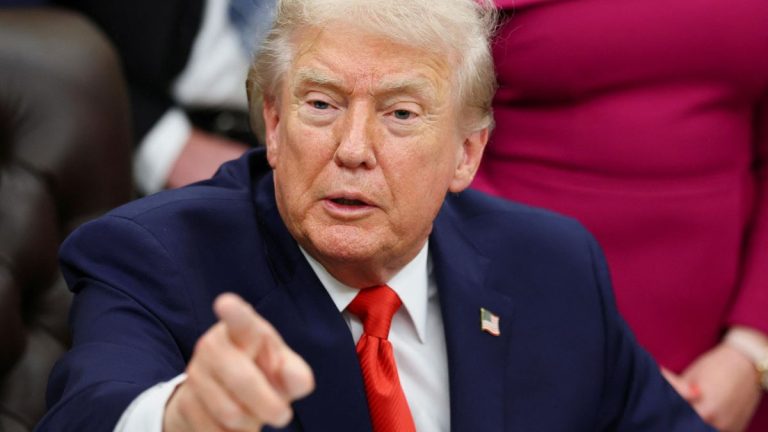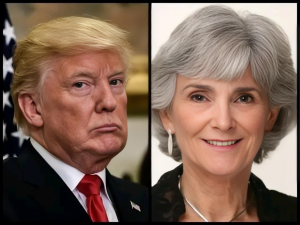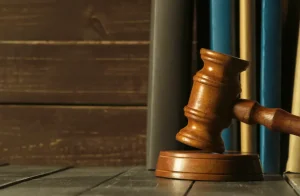Donald Trump has once again found himself at the center of controversy, this time during his diplomatic trip to Japan, where critics argue that he may have violated long-standing protocol during his meeting with the country’s newly elected prime minister, Sanae Takaichi.
The former U.S. president traveled to Japan earlier this week as part of his Asia diplomatic tour, a journey intended to highlight his administration’s engagement with the region and strengthen strategic alliances. During the visit, Trump met with Prime Minister Takaichi, who is Japan’s first female-elected prime minister, and addressed U.S. military personnel stationed aboard an aircraft carrier near Tokyo. Additionally, the two nations signed a trade and rare earths agreement, a move likely to be presented as a diplomatic victory in upcoming statements and briefings.
However, it was not the trade deal or the speech to U.S. troops that sparked widespread discussion online. Instead, attention focused on a short video clip from a ceremonial welcome held at Tokyo’s Akasaka State Guesthouse, where Trump was pictured interacting with Prime Minister Takaichi and inspecting the ceremonial honors.
The ceremonial welcome involved musicians, uniformed soldiers standing at attention, and a series of traditional diplomatic gestures intended to honor both nations. Video footage shows Trump and Takaichi walking together through the reception area, seemingly observing the ceremonial display. But according to critics and protocol experts, one moment in particular stood out—and not in a positive way.
As the video shows, Trump walks past both the United States and Japanese flags and appears to simply salute the soldiers without pausing in front of the flags. Observers note that in such diplomatic settings, it is customary for visiting officials to stop in front of the host nation’s flag—or both nations’ flags—and perform a bow or other gesture of respect.
Jeffrey J. Hall, an assistant professor and PhD at Waseda University’s Organization for Regional and Inter-Regional Studies in Tokyo, highlighted the incident in a social media post on X (formerly Twitter). Sharing the video, Hall wrote:
“It looks like President Trump didn’t realize he was supposed to stop in front of the US and Japanese flags. Prime Minister Takaichi seemed confused that Trump kept walking, and then followed proper protocol and bowed in front of the flags.”
In the same post, Hall included a comparative video showing Sri Lanka’s President Anura Kumara Dissanayake bowing to the Japanese flag, alongside Japan’s former prime minister Shigeru Ishiba bowing in return to Sri Lanka’s flag. The side-by-side footage illustrated what many diplomatic observers considered the proper form for such ceremonial interactions, subtly emphasizing Trump’s apparent misstep.
Social media quickly amplified the video and Hall’s commentary, with users mocking Trump’s behavior and framing the incident as yet another instance of his disregard—or inability—to adhere to formal protocols. One user wrote:
“Trump violated protocol during his meeting with Japan’s Prime Minister Takaichi. He didn’t stop by the flags, saluted the Japanese soldiers, and walked ahead without waiting for her.”
Another added:
“He’s walking and breathing at the same time – I wouldn’t expect a whole lot more out of him.”
A third user wrote:
“They should have put a leash on him like a puppy dog. He is incapable of understanding any protocol. Such an embarrassment for our country.”
And another harshly commented:
“Trump knows nothing about Protocols, Traditions, or Standards. And he doesn’t care. Trump does what Trump wants and doesn’t care if it’s disrespectful or not. This is Trump.”
While critics have been quick to highlight what they see as a diplomatic faux pas, supporters and some analysts suggest that the situation may be overstated. They argue that minor deviations from ceremonial protocol, while noticeable to experts, do not necessarily signal disrespect or a failure of diplomatic judgment. Indeed, Trump’s broader agenda in Japan—signing a trade and rare earth agreement, engaging with U.S. military personnel, and meeting the prime minister—was largely consistent with the goals of high-level diplomatic visits.
Nevertheless, the optics of the moment have sparked debate about the importance of ceremonial protocol in international relations. In Japanese culture, formal bows and gestures carry deep significance, and deviations can be interpreted as a lack of respect or understanding. In diplomatic contexts worldwide, gestures such as saluting, bowing, or standing in designated positions are not merely ceremonial—they signal recognition of sovereignty, respect for tradition, and attentiveness to protocol.
For Trump, who has frequently challenged conventional norms of political behavior, this incident fits a familiar pattern. Throughout his political career, Trump has often prioritized spontaneity and personal style over strict adherence to established procedures. Whether in domestic politics, international summits, or ceremonial events, Trump’s actions frequently generate scrutiny and debate about whether his approach enhances or undermines U.S. interests.
Observers also note the contrast between Trump’s approach and that of his diplomatic counterparts, many of whom meticulously follow ceremonial expectations to ensure smooth interactions and avoid misunderstandings. For example, leaders in East Asia and Europe are typically well-briefed on every detail of ceremonial protocol before participating in state functions, reflecting the importance these gestures hold in formal diplomacy.
In the case of the Akasaka State Guesthouse ceremony, Trump’s decision to simply salute the soldiers and continue walking—without pausing in front of the flags—was interpreted by some as a departure from these expectations. While it may seem a minor point to casual observers, protocol experts argue that even small deviations can carry symbolic weight, potentially affecting perceptions of respect and attentiveness.
It is also worth noting that the incident underscores the challenges inherent in cross-cultural diplomacy. Even experienced political figures can inadvertently misstep when navigating the complex and often subtle norms that govern formal interactions in foreign countries. Differences in ceremonial traditions, historical context, and cultural expectations can make the simplest gestures—such as a bow, a salute, or a pause before a flag—fraught with significance.
Critics have framed the incident as an embarrassment for the United States, suggesting that it reinforces perceptions of Trump as impulsive and unconcerned with diplomatic decorum. Social media commentary ranged from sharp mockery to satirical exaggeration, reflecting the broader polarization surrounding Trump’s political persona. For some, the video was emblematic of what they see as a broader pattern of disregard for established norms.
Supporters, on the other hand, argue that the reaction is overblown, emphasizing that Trump’s actions during the visit were consistent with his goal of asserting U.S. interests and engaging directly with both Japanese leadership and military personnel. From this perspective, minor ceremonial missteps are less important than substantive outcomes, such as trade agreements and strategic cooperation.
Despite the differing interpretations, the video has already become a focal point in discussions about diplomatic protocol and international relations. Media outlets, political analysts, and social media users alike have debated the significance of the gesture, generating widespread attention both in Japan and the United States.
For Prime Minister Takaichi, the moment may have been awkward but not necessarily damaging. Footage shows her adhering to proper protocol by pausing and bowing in front of the flags, demonstrating both respect for tradition and an awareness of diplomatic expectations. Observers note that her actions contrasted with Trump’s approach, highlighting the differing levels of familiarity with formal ceremonial norms.
The incident also raises questions about the role of ceremony in diplomacy more broadly. While some may view ceremonial protocol as symbolic and largely performative, experts emphasize that these gestures convey important messages about respect, recognition, and attentiveness to cultural norms. In a world of nuanced international relations, even small gestures can carry outsized significance, influencing perceptions of both leaders and nations.
Ultimately, the debate surrounding Trump’s behavior in Japan reflects broader tensions between personal style and formal protocol in international diplomacy. It highlights the challenges leaders face in balancing authenticity, assertiveness, and adherence to established norms, particularly when visiting countries with distinct cultural traditions.
As the video circulates online and reactions continue to pour in, it is likely that discussions about Trump’s approach to protocol in Japan will remain a topic of conversation for some time. Whether seen as a minor misstep, a humorous incident, or a symbol of broader concerns about his diplomatic style, the moment underscores the enduring attention paid to ceremonial gestures in high-profile international interactions.
Trump’s visit to Japan, including his meeting with Prime Minister Takaichi, his address to U.S. troops, and the signing of trade agreements, will likely be remembered both for its substantive outcomes and for the viral video capturing this controversial ceremonial moment. In the world of modern media and social platforms, even brief, seemingly small gestures can quickly become a flashpoint, generating debate and commentary across the globe.
In the coming days, analysts will likely continue to dissect both the diplomatic significance of the visit and the implications of Trump’s approach to ceremonial protocol. Whether viewed as an isolated incident or part of a broader pattern, the event serves as a reminder of the complex interplay between personal style, cultural expectations, and formal tradition in international diplomacy.
For now, the video remains a topic of discussion and, for many critics, a source of amusement or concern. While some emphasize the importance of protocol in maintaining respectful and effective diplomatic relations, others focus on Trump’s willingness to act independently of convention, highlighting the ongoing debate over the role of formality versus pragmatism in high-level diplomacy.
As the global community watches and commentators continue to weigh in, Trump’s Japan visit illustrates the enduring power of symbolic gestures in shaping perceptions, even as the substance of policy and diplomacy continues to unfold.

Emily Johnson is a critically acclaimed essayist and novelist known for her thought-provoking works centered on feminism, women’s rights, and modern relationships. Born and raised in Portland, Oregon, Emily grew up with a deep love of books, often spending her afternoons at her local library. She went on to study literature and gender studies at UCLA, where she became deeply involved in activism and began publishing essays in campus journals. Her debut essay collection, Voices Unbound, struck a chord with readers nationwide for its fearless exploration of gender dynamics, identity, and the challenges faced by women in contemporary society. Emily later transitioned into fiction, writing novels that balance compelling storytelling with social commentary. Her protagonists are often strong, multidimensional women navigating love, ambition, and the struggles of everyday life, making her a favorite among readers who crave authentic, relatable narratives. Critics praise her ability to merge personal intimacy with universal themes. Off the page, Emily is an advocate for women in publishing, leading workshops that encourage young female writers to embrace their voices. She lives in Seattle with her partner and two rescue cats, where she continues to write, teach, and inspire a new generation of storytellers.
